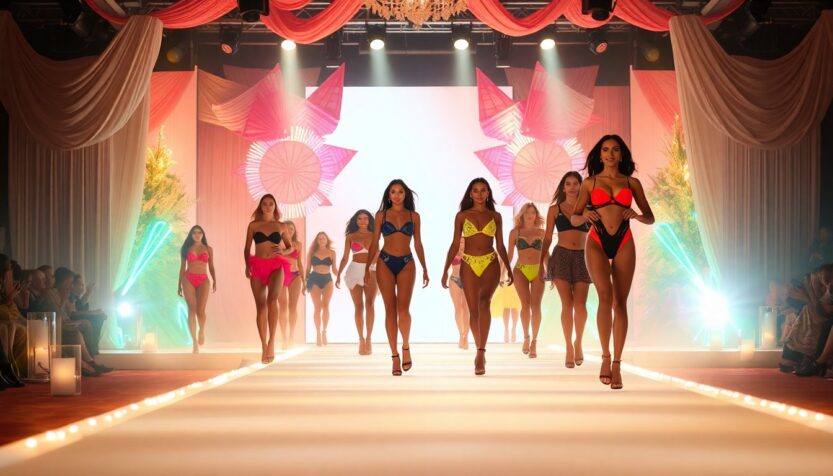Last night, the much-anticipated return of the Victoria’s Secret Fashion Show marked a significant moment in the brand’s history. This event came six years after a pause, which followed scrutiny over casting choices. The 2019 edition was canceled due to backlash regarding its focus on narrow beauty ideals, seen by many as outdated and exclusionary. In an effort to reinvent itself, the brand presented a dazzling show that aimed to reflect a broader spectrum of beauty.
Featuring long-time models such as Adriana Lima and Lily Aldridge alongside fresh faces like athletes and social media stars Quenlin Blackwell and Gabriela Moura, the lineup sparked discussions online. Critics voiced discontent even before the event commenced, questioning the inclusion of influencers and expressing nostalgia for traditional models. However, it is essential to assess what this evolution signifies for the brand.
Challenging traditional standards
Victoria’s Secret has long been associated with a specific type of beauty—one often deemed unattainable for the average person. The show had become synonymous with a select group of tall, slender models, leading to justified criticism. In an age where representation and diversity are increasingly valued, the brand’s shift towards a more inclusive model lineup has been both welcomed and contested.
While it is valid to appreciate the artistry of traditional modeling, the presence of influencers and athletes reflects a shift towards a more relatable image. Social media figures like Quenlin Blackwell and Gabriela Moura possess substantial followings and cultural influence, often surpassing that of seasoned models. This blend of talent illustrates a broader definition of what it means to be a model today.
Influencers: Redefining the runway
The idea that influencers diminish the integrity of fashion shows is a misconception that needs addressing. Social media has transformed the modeling landscape, with many top models today balancing their careers with substantial online presences. If we consider figures like Cindy Crawford and Tyra Banks, they were pioneers in blending modeling with celebrity status and social influence.
Moreover, current top models frequently engage in brand partnerships and social media promotions, similar to their influencer counterparts. The distinctions between traditional models and influencers are increasingly blurred. This raises the question: Why should influencers not share the spotlight on a prestigious platform like Victoria’s Secret?
The excitement of a mixed cast
When I spoke with Cosmo shopping editor Hannah Oh, who attended the 2025 show, she emphasized that the inclusion of influencers did not detract from the overall experience. “The original Angels and established models like the Hadids brought incredible energy,” she noted. “I didn’t even realize there were influencers in the lineup; they blended seamlessly with the professional models. Their presence added to the excitement, rather than taking away from it.”
A changing narrative
This backlash against influencers echoes a similar reaction that emerged when renowned models like Bella and Gigi Hadid first entered the scene. Initially criticized as heirs to privilege, they have since become iconic figures in the fashion industry. The narrative surrounding these new entrants into the Victoria’s Secret runway has shifted, challenging the notion that only a select few should access such platforms.
Victoria’s Secret is striving to reflect the world as it is today, moving away from its previously narrow focus on a singular body type and race. The brand’s current casting strategy embraces a variety of ethnicities and body shapes, a move that resonates with modern audiences seeking authenticity and relatability in fashion.
A fresh chapter for Victoria’s Secret
At a time when beauty standards are evolving, it is crucial to support brands like Victoria’s Secret as they diversify their representation. By incorporating a mix of influencers and models who resonate with today’s audience, the brand is not only adapting but also challenging its legacy. This transformation indicates that every individual, regardless of their background or career path, deserves a platform to shine.
Featuring long-time models such as Adriana Lima and Lily Aldridge alongside fresh faces like athletes and social media stars Quenlin Blackwell and Gabriela Moura, the lineup sparked discussions online. Critics voiced discontent even before the event commenced, questioning the inclusion of influencers and expressing nostalgia for traditional models. However, it is essential to assess what this evolution signifies for the brand.0

